Early Summer Green Rice from Tehran
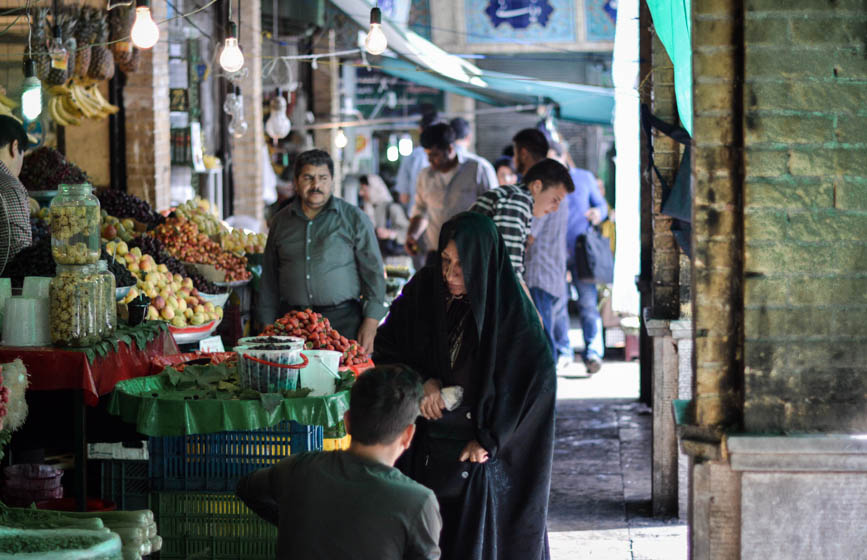
“Tehran is the third most beautiful capital in the world!” promised our friend Muhammed.
Mmm I think that is slightly debatable…with its mad traffic and consequentially high air pollution, this congested city has not managed to squeeze its way into my top three places in Iran, but our stay there definitely rated highly due to the lovely people we met.
Tehran is not the best place to eat out in Iran, with higher restaurant prices and great produce found in markets, the best food is often found inside homes and we were extremely excited to be put in touch with the fantastic sister duo of Lea and Hilly.
With their fascinating international heritage, Lea’s cooking is infused with ideas picked up from friends and family from Italian to Persian, to British to Iraqi influences. Their paternal grandmother was from Iraq, a seamstress till she met their Iranian grandfather who was a councillor in Iraq and after marriage they moved back to Iran where their grandmother still spoke arabic instead of farsi.
Their maternal grandmother was British and their mother purchased land one hour west of Tehran where now stands what they refer to as the “No Name Farm”. Built up from scratch in the “Far Far West”, this farm is now a horse breeding ground where Hilly trains horses and Lea is planting a pistachio garden. The family’s tie to the ground is completed by Hilly’s husband Amir who produces olive oil with his family business in Shiraz.
When we told them about our food project, they were extremely welcoming and happy to show us a classic Iranian dish. Lea has decided to show us Baghali Polo (Rice with fava beans and dill) and Mohisheh (Iranian meat stew), a recipe she chose with careful consideration. The list of ingredients can be found almost anywhere and as far as Iranian dishes go, it is one of the simplest we have learnt to cook while there. Plus extra bonus, fava beans are in season.
We begin our food adventure with Hilly at the Tajrish Square Bazaar in Tehran where we pick up ingredients for our meal tonight. The square is buzzing with people and the bazaar is lined with stalls selling ready-shelled peas, ready-shelled peanuts, ready-shelled everything, wish we had that at home! There are mountains of herbs, essential to the Iranian diet, purple Thai basil, fluffy dill, spicy spring onions, fragrant coriander and leafy parsley. Then there are curious science laboratory jars filled with water and what look like little floating brains…Even the cerebral like walnut is shelled and kept fresh in salted water to be eaten as a snack.
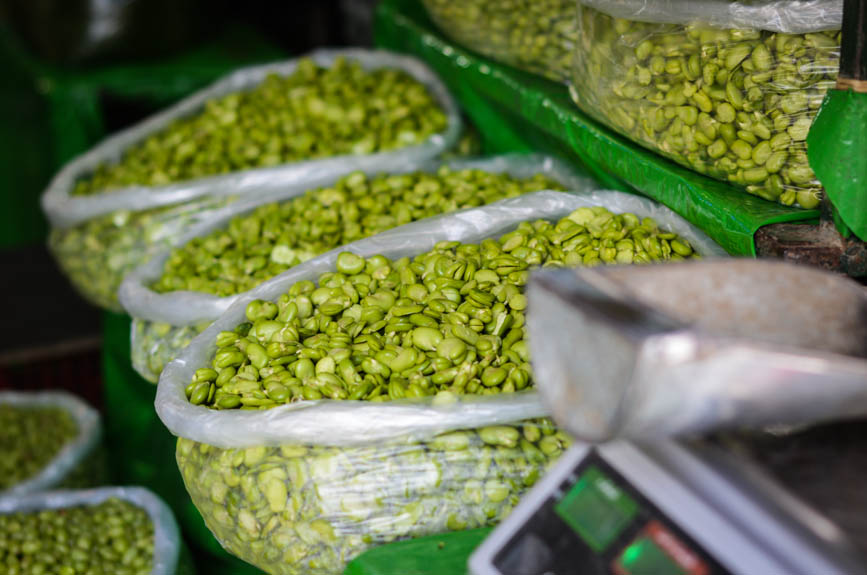
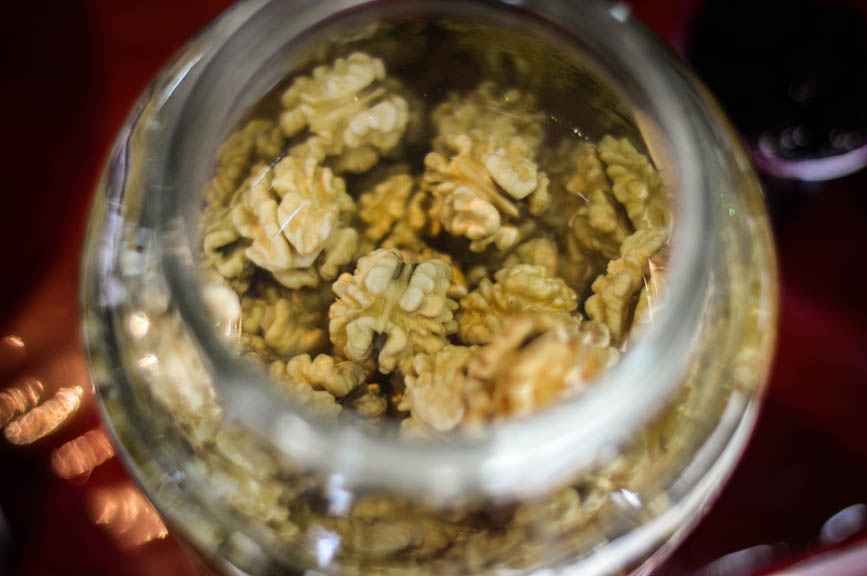
We gather what we need and make our way to the northern suburb of Tehran where Lea lives. With highrise apartments layered close together on the hills of the Alborz mountains, it reminds me of the Mid-Levels in Hong Kong, the closest I have come to seeing a place similar to the residential areas of big cities in South East Asia.
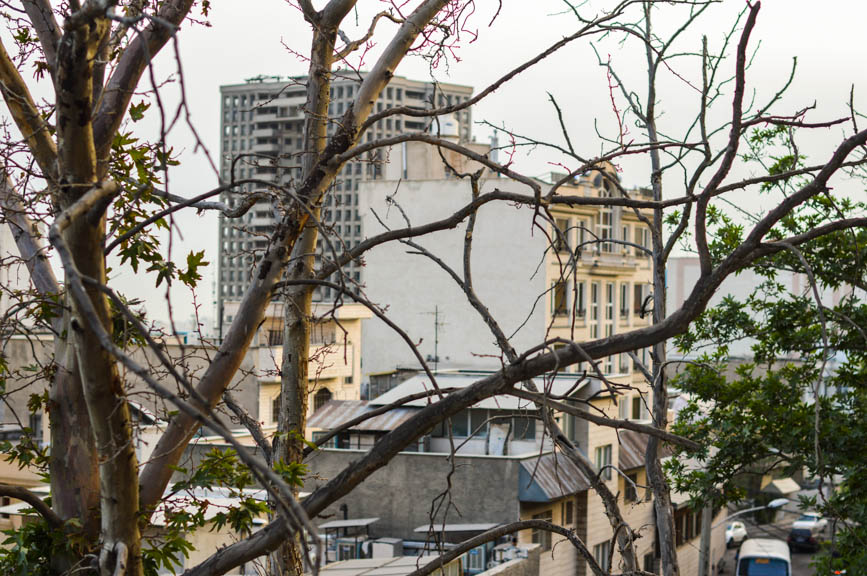
We start by working on the herbs, while the fava beans are ready-shelled, the herbs need some trimming, but not without an aperitif first. They introduce us to the sour cherry drink, popular sour cherry syrup mixed with water and copious amounts of ice. Perfect for the hot weather. To accompany our icy concoction, the walnut halves, drained and rinsed. I remember begging my Italian grandmother every autumn to save me some fresh walnuts to eat when I arrived in Italy, so I happily sampled these. Lovely and mild, the moist flesh is incomparable to the dry walnuts you usually get in stores, as long as you peel off the outer skin which is extremely bitter.
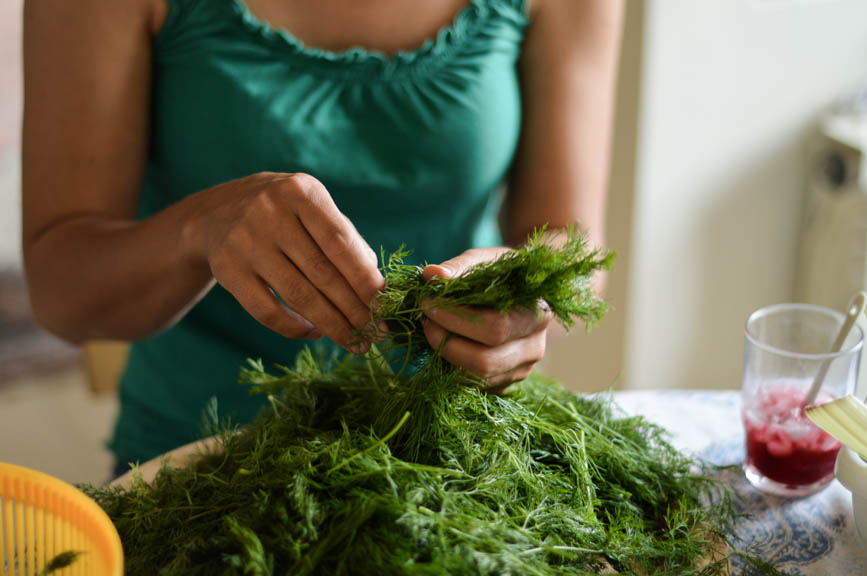
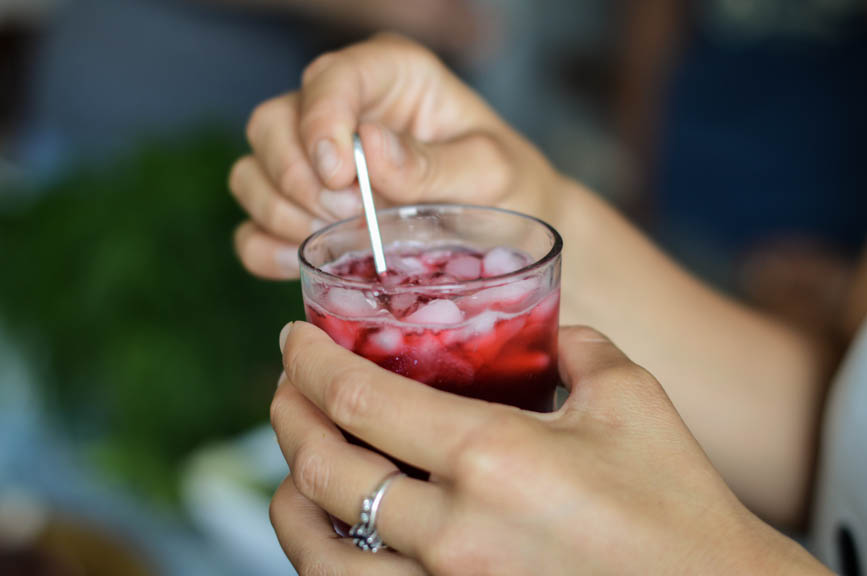
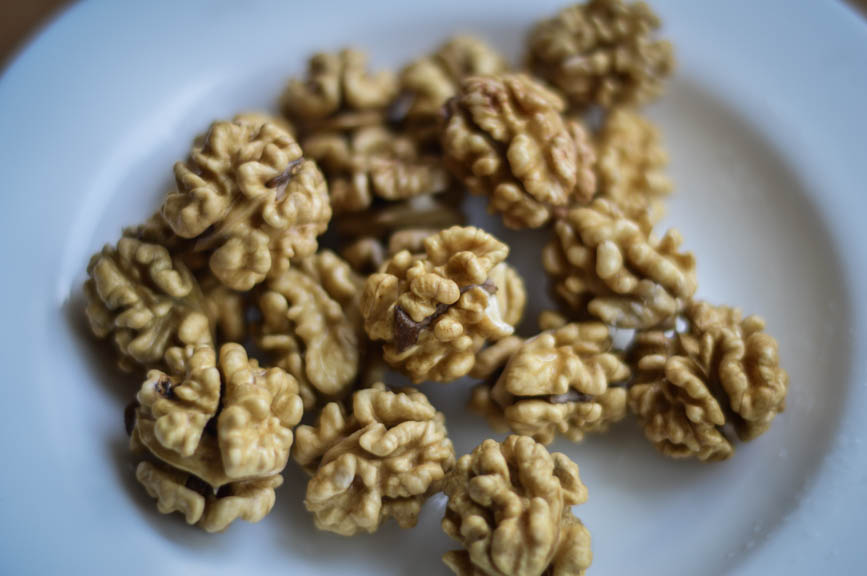
We chop up our little pyramid of herbs, a bouquet of dill so beautiful it was almost a shame to butcher it. From the “No Name Farm” comes the fresh herbs and green chillies which we add to the salad and mix with Amir’s perfumed olive oil and one of our new favourite discoveries – date vinegar. Like a sibling of the balsamico, it is thick, sweet and just right.
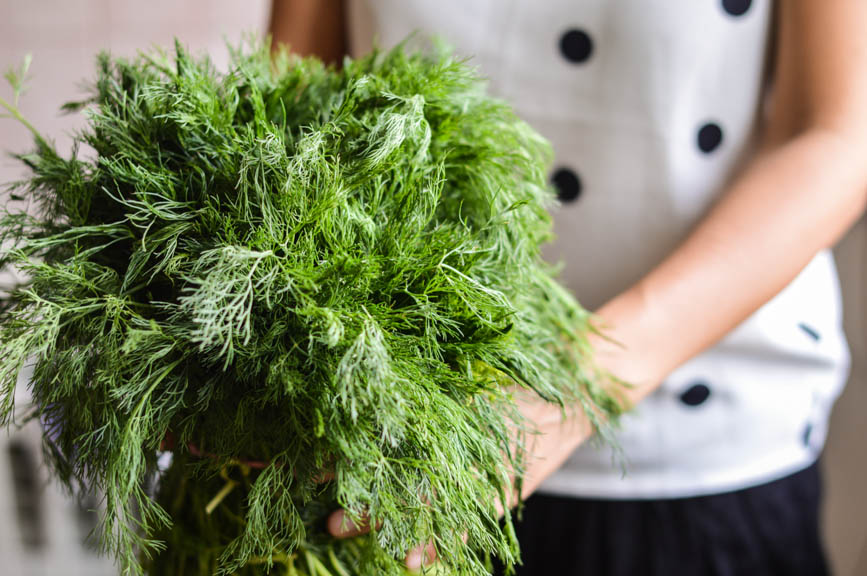
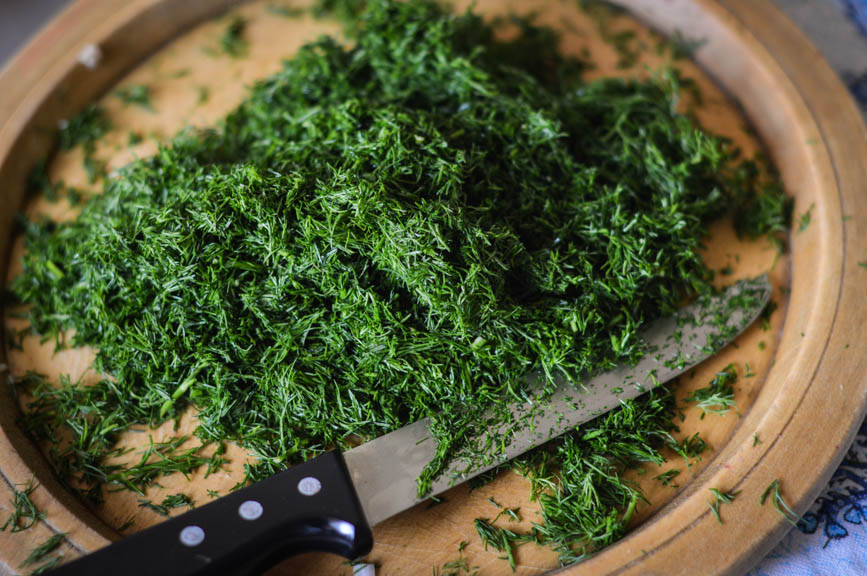
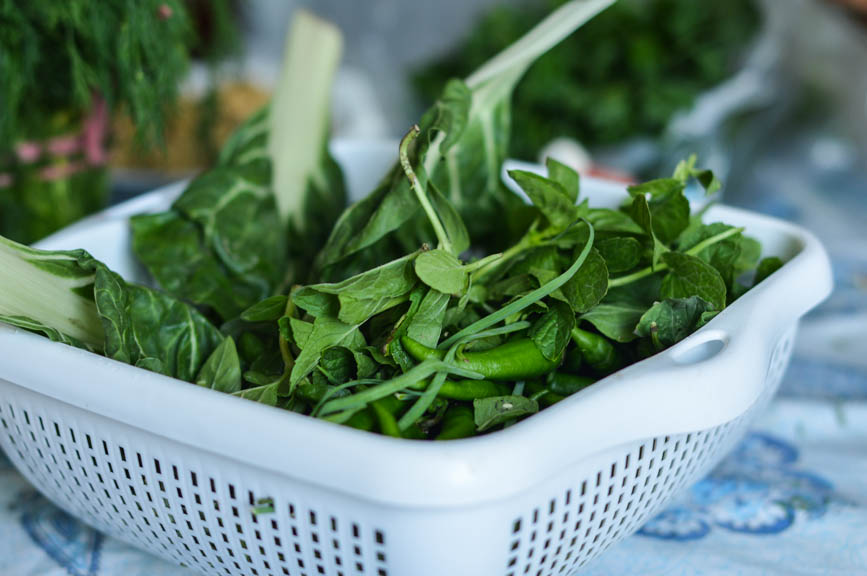
The cooking starts in earnest as we get the Mohisheh (meat stew) going and the rice washed, all the while exchanging anecdotes and stories about our cooking heritage. Lea is a real “ashbaz“ (chef) who loves to experiment and multitask preparing several dishes at the same time. Tomorrow they are going camping and she is cooking up her grandmother’s special Iraqi omelettes to bring along. A recipe for another day!

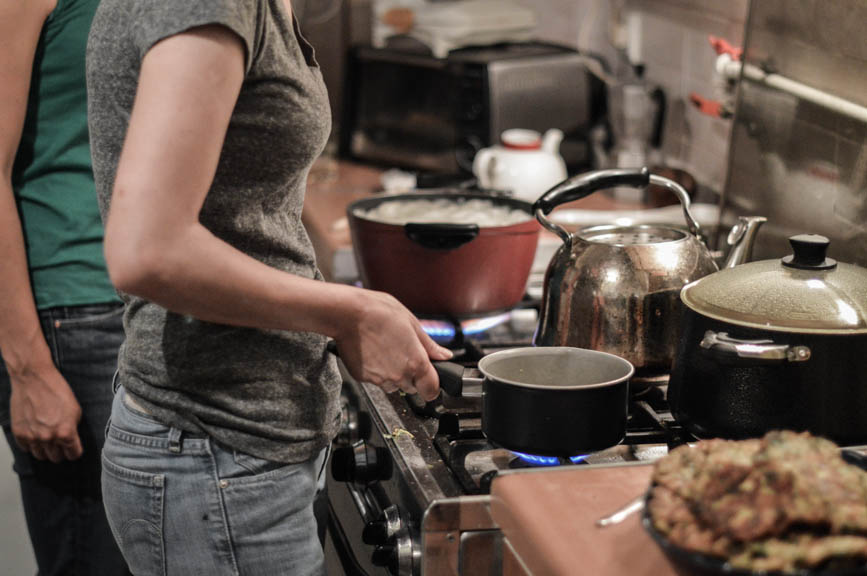
We had a wonderful time with them, learning about their family history, modern Iranian life, and of course mouth-watering food. It also showed me another way of living as a woman in Iran. We are extremely grateful to Lea and Hilly for opening up their home to us and sharing a meal together; and we can’t wait to try these recipes when we get back home.
I leave you with something less savoury, but hilarious – supposedly Farsi has several phrases which are lost in translation with the Italian language and Lea did not hesitate to teach us one. “Perché ridi?” In Italian means “why are you laughing?” In Farsi unfortunately, it literally means “Why did you shit?”
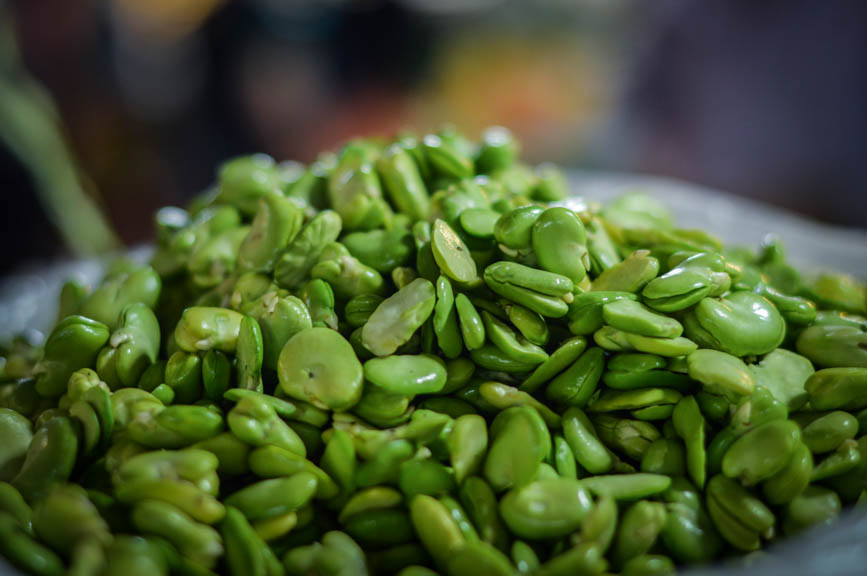
BAGHALI POLO باقلابرنج \ˌbah-gah-lee-poh-loh\
When in season, baghali – fava beans have many uses in Iranian cuisine, besides the street food version we tried in Tabriz, this is one of its favourite uses, cooked with rice and dill, it make the perfect accompaniment to stews and sauces. “Polo” is the name used for rice which is cooked with extras such as cabbage, herbs or carrots. Plain rice served together with a main dish is referred to as “Chelo” and rice itself is “Berenj”. Here it is served with Mohisheh, a type of beef stew (recipe below).
Serves 6
For the rice
4 cups of Basmati or Jasmine rice
1 tbsp salt
3 cups of fava beans, removed from pod and shelled
2 1/2 cups fresh dill
3 tbsp vegetable oil
1/2 tsp turmeric powder
25g butter
1/4 tsp saffron threads
water for boiling
Soak the rice in water with the salt while you prepare the other ingredients, you can even soak it overnight if you want.
Clean the dill and remove the stalks. Blanch the fava beans by putting them in a pot and covering with cold water, once boiling, leave for a minute or two, then drain. They should be al dente and still bright green.
Rinse the rice and bring a large pot of water to boil, pour in rice and boil for 15 mins at a steady simmer over medium heat, then drain and set aside.
You can use the same pot while its hot and coat it with the vegetable oil, sprinkle the turmeric powder onto the bottom of the pan and mix with the oil. This will give the “tahdig” (rice crust) some nice colouring.
Add 2 cups of the cooked rice into the pot, then mix 1/2 cup of fava beans with 3/4 cups of dill and mix gently into the rice in the pot. Repeat with layers until all ingredients are used up.
Wrap a cloth around the lid and cook over a low fire.
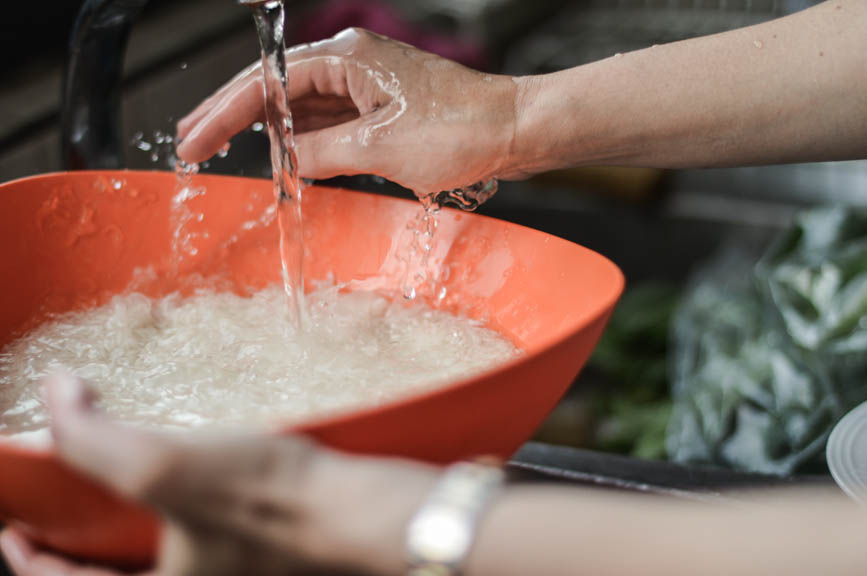
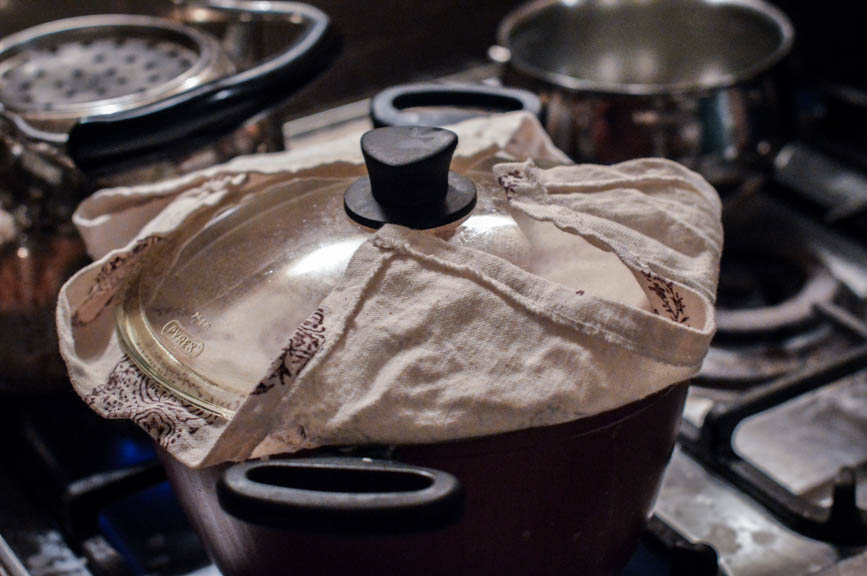
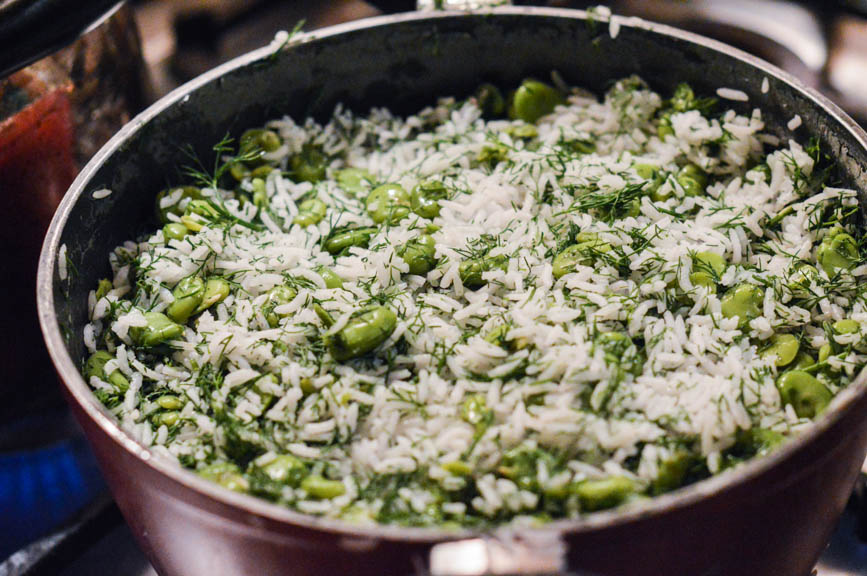
After about 10 – 15 mins there are two ways to check if it is ready, take a fork and poke holes in the bottom through the rice to see if there is enough “tahdig“. There should be a nice crispy coating of rice at the bottom.
Or, in the north, if you started with a cold pot and follow the rule of never opening the rice lid until it is ready (opening it technically ruins the rice), you can lick your finger and touch the hot pot on its side, if it sizzles, the rice is ready.
I leave it up to you to decide which one you dare try!
While the rice is cooking, melt the 25g of butter with 2 tbsp of water and pour this over the rice when ready. To finish it off, mix the saffron with about 2 tbsp of boiling water to make “saffron tea”. When the rice is ready, mix about 1 cup of the cooked grains with the deep amber tea to give it colour and then serve it all on a plate with the saffron rice on top.
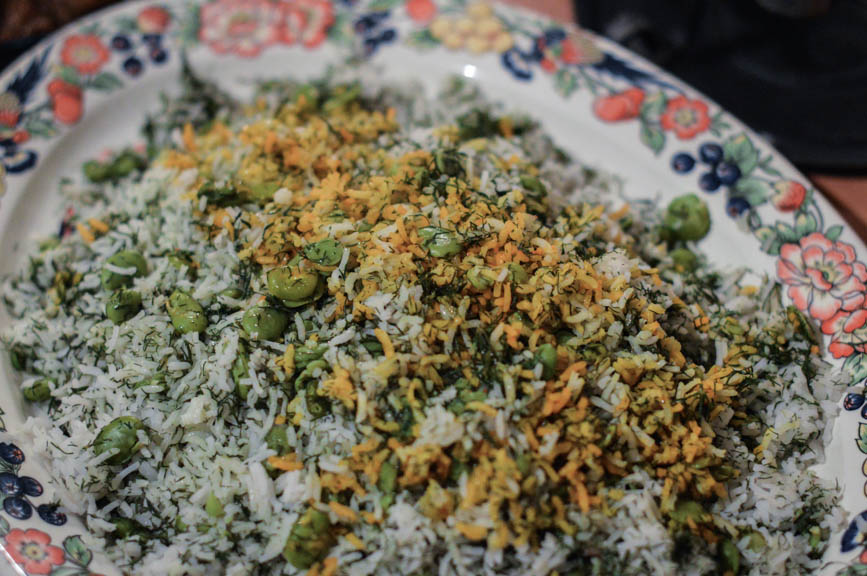
MOHISHEH گوشتتاس کباب \ˌmoh-heeh-sheh\
This stew is very similar to European dishes, but the mix of spices added gives it a special something. Here we used the muscular part of the meat which surrounds the marrow bone like “osso bucco” without the bone. Ask your butcher to give you a boneless beef shank, though you could also use any favourite cut of meat you usually would use for stews or slow cooking.
Serves 6
For the stew
1 kg of beef shank
2 onions, chopped finely
2 tbsp vegetable oil
2 1/2 turmeric powder
1 tsp black pepper
1/2 tsp of chilli flakes (more if you like it spicy and depending on the strength of your chilli)
water for boiling
2 tsp salt
Cut up meat into 2 inch pieces, against the grain if possible.
Heat up the oil in a large heavy bottom pot and brown the meat. Add the onions and continue cooking and gently stirring over medium heat until onions are nice and soft.
Add the black pepper and the chilli flakes, stir, then sprinkle in the turmeric.
Add hot boiling water from a kettle until the meat is covered. Cover with lid and let the stew cook at a rolling simmer for about 2 hours. (You could also do this in a pressure cooker, if so, adjust the time accordingly)
If too much water has evaporated during cooking you can add more, but the aim is to get a thick sauce and tender meat. Taste the sauce and add the salt, adjust according to taste (adding the salt earlier would dry the meat).
After 2 hours, check if meat is cooked with a fork and serve alongside the baghali polo.

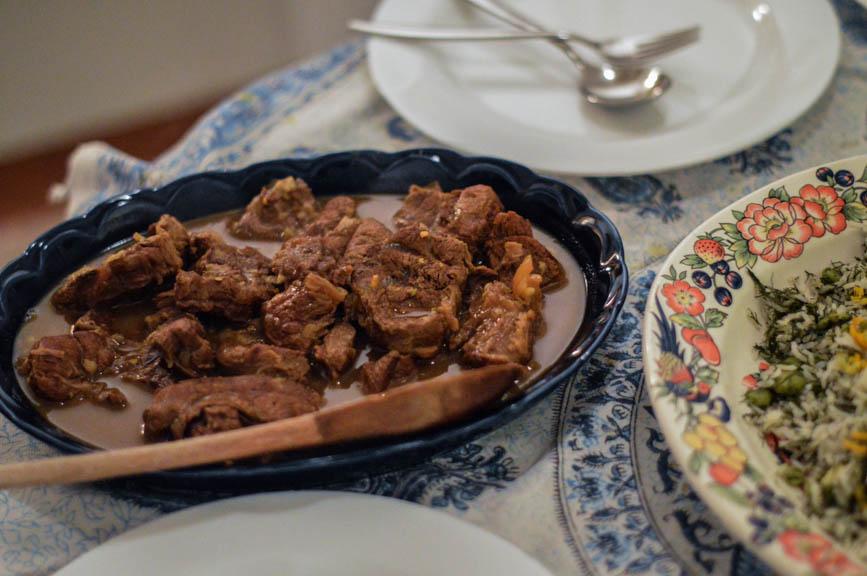
Noshe-jan! Bon Appetit – literally means “Nourish Your Soul”.





